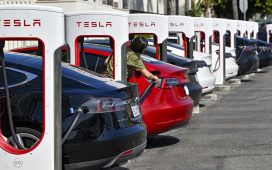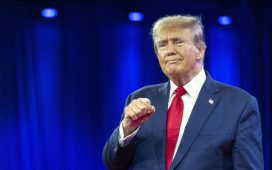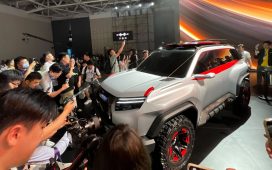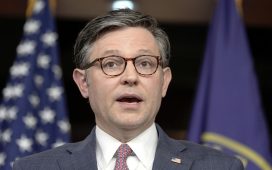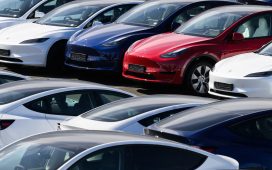How is the pandemic affecting Nissan’s outlook?
In the first quarter, we talked about a full-year outlook, and we announced a ¥470 billion ($4.51 billion) negative [operating loss]. Many say that that was too conservative. Nissan Next was about how we can restructure ourselves in the next three years and put ourselves on the growth path. So we had the world premiere of the Ariya on July 15. Hand raisers with an intention to buy the model are over 69,000 people. After that, we showed the Z prototype in September. We could show our value to customers through a sports car DNA. The message was that Nissan will still move forward with our strengths. Now we have to demonstrate it.
How is Nissan Next proceeding?
We are on track with Nissan Next. Our quality of sales is gradually improving, and also the fixed cost is in line with what we have said. The foundation is our DNA and culture.
But there is also the alliance — how we can best utilize the existing assets of the alliance for each company’s growth. This year, the COVID situation is very tough. But next year, we want to make sure that we are going into profit. We have to do what we committed to do under Nissan Next. In the U.S. over the next 20 months, we will introduce 10 models, including minor changes. And by the end of 2021, we will have six new models. We must ensure that new-model launches are successful.
How much progress has Nissan made in reducing global production capacity to 5.4 million vehicles?
That’s also on track. Capacity has to be flexible, in accordance with the market. We are fixing the level of production quarterly to what is appropriate, to make sure we don’t overproduce. That’s very important because of the COVID situation. There are huge ups and downs in terms of the volume needs of the market. We need to make sure we can flexibly meet those needs.
How is Nissan’s realignment toward quality of sales?
We want to ensure our presence in the market the right way. That means we don’t want to push the volume. We want to make sure that retail sales are in line with what we have said. For fleet sales, we need to have a good strategy. We need to make sure our rental numbers are not as [high] as they have been in past years. Inventories are coming back to healthy levels.
How does Nissan quantify whether it’s achieving quality of sales?
First of all, do we have enough dealer engagement? In the NADA survey, we are improving. Of course, it’s not enough, but it’s going in the right direction. We really would like to ensure that dealer engagement will be solid. That comes first, because our dealers are the ones selling our brand. That is where, operationally, we are putting a lot of effort.
Then after that, we need very good product in our lineup. Without having those steps, this is not going to happen.
We have detailed, daily discussions with dealers, trying to understand their concerns and how we can make sure those can be rectified. And that result is making the numbers better. Therefore, I think we have started moving forward in terms of the relationship with our partners. These partners are the ones on the front lines to represent our models and represent the brand itself.
We would like to respect what the dealers are doing, and we want to grow together with the dealers. And we want to make sure that our relationship is going to be, day by day, getting better.
We had a bad tendency before of aggressive wholesale [volumes]. So this is something that we totally changed in the way of operation. In a way, it looks very conservative. But this is something that we don’t want to trigger in the future, especially under the COVID situation.
How does the U.S. figure into executing the Nissan Next plan?
If we cannot ensure that the U.S. operations recover, we will not be able to pursue what we set out in Nissan Next. That’s where we really need to rectify ourselves in terms of operations and reestablish our brand image. We want to respect what the dealer is doing and grow together. The U.S. is one of the most important markets for us, and without the success of the U.S., we will not be able to pursue what we have said in Nissan Next.
How are relations with alliance partners Renault and Mitsubishi? Things seem quiet lately.
It looks quiet. It sounds quiet. Maybe that’s good. We have a monthly meeting with the partners, and of course we are in touch on a lot of discussions. Nothing has slowed down, and nothing is stagnant. Each company has to concentrate on its own performance while we make sure the existing assets can be utilized.
There are a lot of assets that we have built up over the last 21 years. And these are the main discussions we are having monthly with our partners.
Even though relations have stabilized, have the alliance partners just put off the inevitable, which is finally talking seriously about an adjustment of the cross-shareholdings?
Every month we are talking, but we never talk about a merger. Getting each company’s performance at the right level is the first priority.
What are your personal thoughts on a merger? Are you for, against or no opinion?
I would say “no opinion.” The only thing we are thinking about today is how to make sure we ourselves are at the right level. Have we had a merger before in the past 21 years? No. And I don’t think our partner is thinking about a merger at all. How we maximize the synergy is the first thing we really need to think about, and how I can make sure to give the right level of dividend back to the shareholders.
How can Nissan better leverage the partnership with Mitsubishi?
There are quite deep discussions with Mitsubishi, and we want to look further into synergies in terms of ASEAN, or even in Japan, with kei-cars (minicars). Moving forward, what will be the best synergy we can establish between Mitsubishi and Nissan is under discussion.
Is there opportunity to cooperate with Mitsubishi in North America?
If there is something we can support in the region, it is always under the discussion of the alliance. Right now, we are not discussing much. We say it this way — for a Mitsubishi plan, they need to build their own strategy in the U.S. If they think they want support from Nissan, then of course we can support. So each brand has to build its own strategy. That comes first.
Luca de Meo joined Renault as its CEO in the summer, and Mitsubishi CEO Takao Kato is a relatively new leader as well. How do you get along with them?
What’s most important is how closely we can communicate with each other and have transparency in our operations and respect each other. That’s the only way we can get the trust in the end. It is the same spirit of the past 21 years. A foundation of the mindset and spirit are there. Although Luca and I just met last July, it seems like I’ve been talking with him more than a year, and it’s also the same with Kato-san at Mitsubishi.
